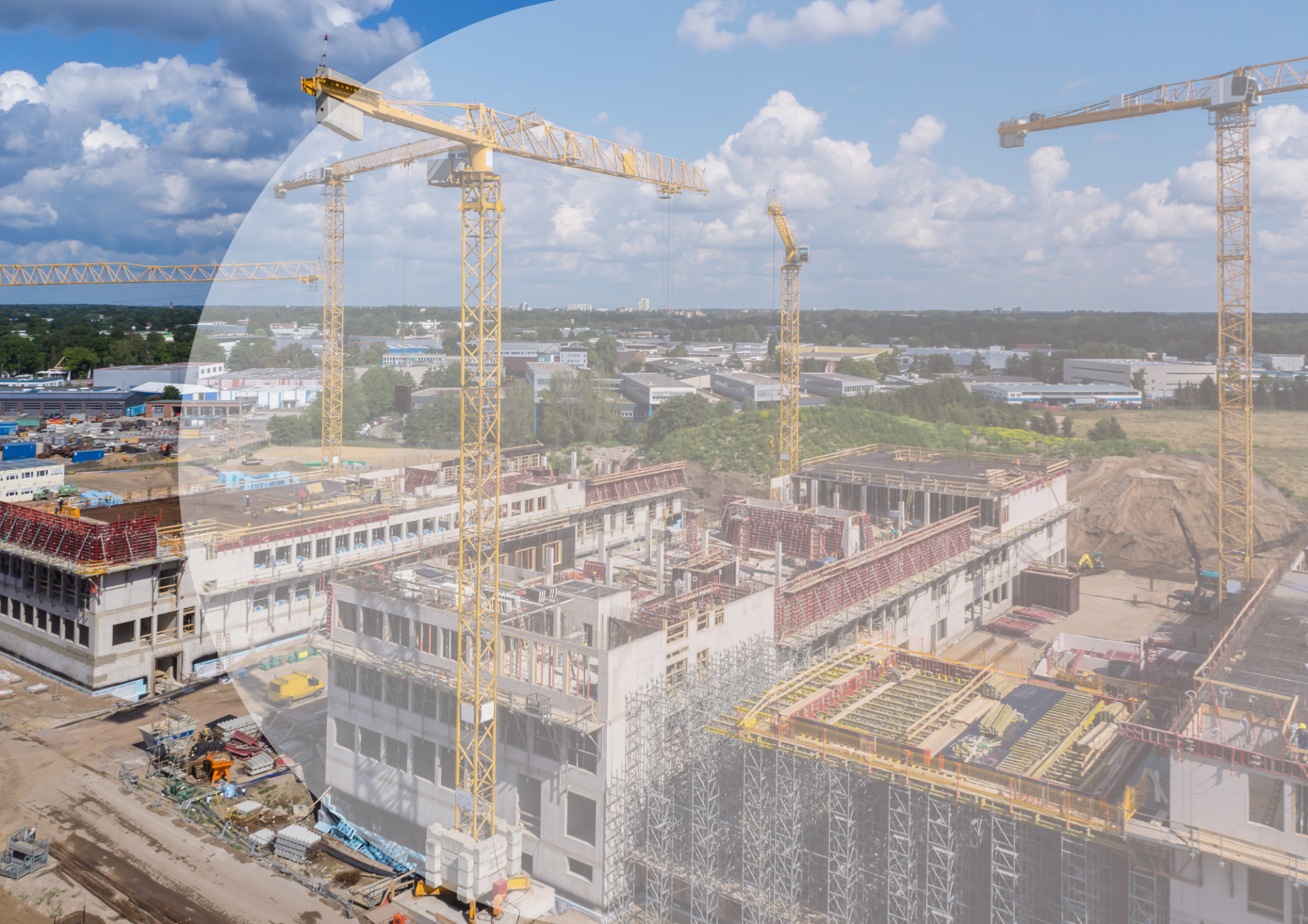The medium-term prospects for the property and construction industry remain buoyant despite current market uncertainty, according to a new report published by McBains.
The McBains Construction Market Report for Summer 2025 finds the industry is showing gradual recovery after a challenging period marked by high inflation, planning delays and labour shortages, with further growth forecast for 2026.
McBains estimates that tender price inflation will rise by around 2 per cent over 2025 and the same in 2026, representing a more optimistic prediction than some competitors.
But the report also says to provide cover for concerns over costs and pricing, more developers are expected to continue to push forward with major commercial projects on a stage-by-stage basis and a resurgence of the package-based procurement model instead of traditional ‘lump sum’ contracts.
Other highlights of the report include:
- Market output is expected to reach £168.6 billion by the end of 2025, with growth driven by private housing, infrastructure investment and retrofitting, while total construction output is forecast to increase by 1.9 per cent in 2025 and 3.7 per cent in 2026.
- Private housing output is expected to rebound with 4 per cent growth in 2025 and by 7 per cent in 2026, driven by government initiatives and increased demand. The report also forecasts a continued increase in build-to-rent developments and large-scale mixed-use developments that feature substantial affordable housing and town centre regeneration projects.
- Industrial output is anticipated to increase by 1 per cent in 2025 and 2.6 per cent in 2026, with logistics and manufacturing sectors predicted to see particular growth.
- Infrastructure output is projected to grow by 1.8 per cent in 2025 and 4.5 per cent in 2026, supported by significant public investment. However, the report cautions that the supply chain may struggle to meet the demands of large-scale projects.
- The higher education sector forecasts a 10-20 per cent annual decline in total capital expenditure over the next three years due to factors like decreased international student numbers and rising operational costs. Consequently, several high-profile universities have paused building projects and implemented budget cuts and more partnerships with private real estate developers to meet infrastructure needs are expected.
- Labour costs will remain the primary long-term cost driver, with projections of around 19 per cent rise in wage costs by 2029, and the construction industry will continue to face the challenge of an ageing workforce, with more workers reaching retirement than those entering the workplace and as a result the UK needs 225,000 more skilled workers by 2027.
Colin McCaffrey, director at McBains and leader of the team which produced the report, said:
“The construction and property market has been facing economic uncertainty for several years, shaped by a series of disruptions including Brexit, Covid, the wars in Ukraine and the Middle East and, as seen in the last quarter, concerns over a potential trade war with the Trump administration.
“These events unsettle market confidence and they are not just fleeting issues: they are fundamental conditions affecting investment decisions and project timelines.
“But despite these challenges, the report shows that medium-term confidence is buoyant, with growth in private housing, infrastructure and industrial work predicted. Nevertheless, factors such as planning logjams, skills shortages and wage costs will still represent key challenges over this period.”
He added:
“Most organisations remain cautious about pricing risk, which is causing hurdles in negotiating deals on large two-stage contracts. We forecast an increase in the use of innovative procurement strategies including the possible resurgence of the package-based procurement model, which offers an alternative to traditional lump sum contracts, and larger contractors choosing to self-deliver where possible, such as splitting mechanical and electrical services into smaller, separately procured trades.
“We also expect to see contractors exploring co-investment opportunities in projects, seeking higher returns through shared risk and reward.”
The report was compiled by analysing data from a variety of sources, including research by McBains itself and data from the Construction Products Association, the Royal Institution of Chartered Surveyors, the Office for Budget Responsibility, the consultants BCIS and others.
For a copy of the full report, please contact [email protected]
In the Press
CITY AM: Reasons to be optimistic about the UK's construction sector
Construction News: Contract Strategies to Tackle Pricing Risks | Construction News
Construction Enquirer: Staged procurement to make comeback as pricing risk bites | Construction Enquirer News
Construction Wave: Construction industry outlook shows recovery with shift to ‘innovative procurement strategies’ to tackle rising costs - Construction Wave
Mortgage Strategy: Outlook for private housing work positive: McBains – Mortgage Strategy
Mortgage Finance Gazette: Upbeat forecast from McBains on UK new homes – Mortgage Finance Gazette
You might be interested in...

McBains Appointed to Lead Swindon Whole-House Retrofit Programme
Swindon Borough Council has appointed McBains as managing consultant to deliver a comprehensive whole-house retrofit programme across 104 homes in the Stratton and Highworth areas of Swindon.

CONSTRUCTION NEWS: Did the Budget deliver the reassurance that construction is craving?
McBains Managing Director, Clive Docwra, offers his perspective on the Budget and its implications for the construction industry in the months ahead, as featured in Construction News.

Inside Chichester College’s New STEM & Higher Education Centre
Construction of a new purpose-built STEM and Higher Education Centre at Chichester College reached completion recently, with the new building being officially opened by Further Education Commissioner Shelagh Legrave CBE in October.

ESTATES GAZETTE: Simplifying BNG for sheds
In an article for Estates Gazette, Matthew Baldwin, Project Director at McBains, explores how brownfield sites are grappling with BNG requirements and how proposed reforms in the upcoming Planning and Infrastructure Bill could make compliance simpler and more strategic.

New Urgent Treatment Centre opens at Worthing Hospital
A significant part of Worthing Hospital’s multi-million-pound improvement programme to expand its Emergency Department (ED) reached completion recently, with the handover and official opening of a new, purpose-built urgent treatment centre (UTC) on August 29, 2025

RIBA JOURNAL: An unconventional north London community gets a people-focused new heart
McBains is featured in RIBA Journal for our role as structural engineers on Highgate Newtown Community Centre in Camden.






